A Tale of Two Cities
Meet the women of the richest and poorest communities in America
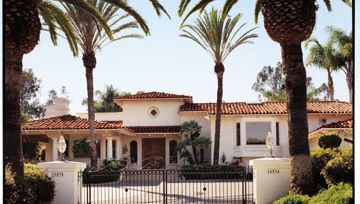
America, the land of equal opportunity and a robust middle class, is an illusion facts can no longer support. In the past 25 years, the median income for the average family has grown by less than 1 percent, while the median income for the very top tier has grown by 200 percent. Not since the Great Depression has there been such a divide between rich and poor. Middle class? What middle class? Life in the U.S., increasingly, is a matter of extremes.
There's no such thing as popping by a neighbor's house to borrow a cup of sugar in Rancho Santa Fe. To visit fellow residents, women get in their Jaguar convertibles or Lexus SUVs and head down long, curving driveways and out mechanized gates, past ivy-covered walls and thick stands of eucalyptus trees, into the center of town. There, they might run into a few friends doing morning yoga in the airy gym at the Rancho Santa Fe Community Center. They might meet another friend at Thyme in the Ranch, a bustling cafe that resembles a country inn, where women gather for cappuccino and croissants. They might swap gossip when they swing by the post office to pick up the daily mail—which they do several times a week because there is no home postal service in Rancho Santa Fe, a deliberate choice that ensures residents will cross paths here, if nowhere else. "We try to maintain the feeling of a small town," says Marian Benassi, 45, a 15-year resident.
Despite the high hedges, there is an easy familiarity among the 5000 residents, as well as an old-fashioned sense of community that manifests itself in quaint traditions like the annual Fourth of July parade, featuring tractors, 1957 T-birds, and children on bicycles decorated with streamers and flags. But this is no Mayberry, USA. According to the U.S. Census Bureau, Rancho Santa Fe is the wealthiest town in America, with a median family income of $200,000 and sprawling Spanish-style homes secreted behind high stucco walls and abundant shrubbery—homes with tennis courts and infinity pools and well-tended gardens cared for by staff, with polished limestone floors and soundproofed media rooms and temperature-controlled wine cellars sheltering rare bottles of Premier Cru Burgundy.
Bill Gates has a home here. So do seven other billionaires. Set in the rolling hills north of San Diego, the heart of "the Ranch," as denizens affectionately call it, is the Covenant, an elite area within the town's original boundaries where spacious homes border a world-class, 18-hole golf course designed by Max Behr. (On Election Day, locals have been known to pull up to the polls in their golf carts.) Club membership—with a $50,000 initiation fee—is limited to Covenant homeowners, as is membership to the adjacent Tennis Club. Membership to the Rancho Riding Club is open to all residents, but most do a lengthy stint on the waiting list before finally getting in.
The town has a more discreet expression of wealth than a flashy, Beverly Hills—style glamour. Women stroll around town in designer jeans and casual cotton separates; their straw mules match their straw purses, and their nails are perfectly done. But despite the everyday, informal aesthetic, Ranch residents know how to throw a party: In April, Elton John was the entertainment at the wedding reception of billionaire investment adviser Charles Brandes and his wife, Tanya. A few years ago, Paul McCartney was flown in to perform at the birthday bash of investment tycoon Ralph Whitworth's wife, Wendy. They've since divorced. ("Can't buy me love . . .")
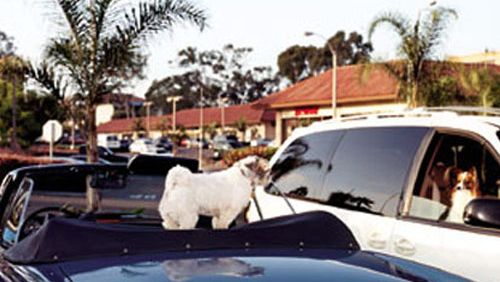
Privacy is critical to the residents of Rancho Santa Fe. So is taste. The town, established in the 1920s by a railroad company, was one of California's first planned communities: a village of gentlemen's ranches unified by their Spanish-colonial architecture. Committed to preserving a sense of continuity, residents established the Rancho Santa Fe Association in 1927 to regulate development. Among the Association's mandates: All homes must be built on a minimum of two acres and obscured by foliage. Any new construction requires unanimous approval from the "art jury," a select panel of residents who review such details as the ratio of house size to lot size, style, colors, and types of shrubbery planted. Such peculiarities seem to have long-term payoffs -- the houses here have appreciated at a rate of 12 percent annually over the past several years. "People are drawn to Rancho Santa Fe because of the open, rural feel," says Pete Smith, manager of the Rancho Santa Fe Association. "We have 60-acre estates here." Safety is another reason: The town boasts one of the lowest crime rates in the country. In the past year, a total of two robberies were reported.
The restrictive building codes guarantee that the people who move here are searching for casual conversation rather than raucous parties. The pickup scene—such as it is—is also low-key. Happy hour at Mille Fleurs, a chic French restaurant on the town's main drag, is dotted with aspiring trophy wives in tight skirts and older gentlemen with dark suits and deep pockets, whispering in each other's ears as bottles of pinot noir pass up and down the bar.
Get exclusive access to fashion and beauty trends, hot-off-the-press celebrity news, and more.
Mainly, though, this is a family place. For married women, child-rearing on the Ranch is something of a competitive sport. "All of my friends in town had professional careers before they had children," says Laura Glatthorn, a petite blonde mother of three who quit her job as a sales representative for Colgate-Palmolive 15 years ago, when her first child was born. Today, Glatthorn's schedule revolves around shuttling her three children to various activities in her white Cadillac Escalade. In the summer, she drops her eldest, 15-year-old Haley, at summer school at 9 a.m., then drives Kendal, 13, to the riding club for lessons, and Jillian, 10, to volleyball practice. A couple of hours later, she collects Jillian and brings her to a soccer match, then retrieves Haley from school and deposits her at the beach.

What alone time she has is spent shopping--voraciously. Inside her room-size walk-in closet, Glatthorn keeps a cordless phone, aka the "911 Fashion Hotline," called frequently by friends facing clothing crises—i.e., a black-tie in two hours and nothing to wear!
It's true, families of such wealth (Glatthorn's husband is a shopping-mall developer) could easily hire a nanny to chaperone the children around town, but Glatthorn takes pride in being there for her brood. At times, the commitment to parenting can be overwhelming. "Given the financial means, the multitude of choices, and the peer pressure for overachievement in Rancho Santa Fe, there is an obligation to be involved in as many different activities as you can," says Diana Burdick, 42, a kinesiologist-turned-stay-at-home-mom with three children. As she talks, 5-year-old Christopher steers his motorized toy car around the glassy pool. "There are no slackers here. People are religious about being the best parents they can." Hence, French class for 5-year-olds, equestrian events for preteens, and debutante balls for 16-year-old local girls almost weekly during the spring—extravaganzas that involve thousands of dollars, and hundreds of hours choosing dresses and venue/menu/guest-list planning.
But Burdick vows it's really not a competition. "Women don't brag about what they own or what they've achieved," she says. "There's an assumption that everyone has done well, or they wouldn't be living here." "Done well" may be a bit of an understatement: Lamborghinis and custom designed Bentleys cruise the freshly paved streets. Along the main street, virtually every other storefront is a real estate agency, with listings ranging from $3 to $18 million. "There are a lot of wildly successful business owners with tons of disposable income who live here," says agent Laura Barry. "They don't like to announce it publicly, but many of my clients pay for their homes in cash, up front."
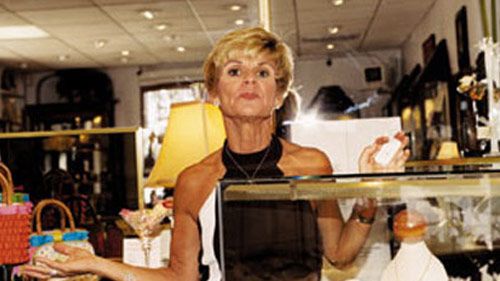
What grown-ups may not want to talk about, children are happy to fill in. Debbie Beran, the owner of Beran's Jewelers, a store on the town's main drag, considered pulling her kids out of the Ranch's grammar school after her daughter, then 5, asked for a Hummer for her birthday. "I don't want my kids growing up with those values," she says. The clincher came while driving her son to football practice one afternoon and listening to his two 12-year-old teammates compare the cost of their houses, and their fathers' cars and salaries. Beran, one of the rare divorced single mothers in town, cringed at the oneupmanship. After that incident, she transferred her children to a Catholic school in the next town over, where the students come from a mix of socioeconomic backgrounds.
The bubble effect at the Ranch is obvious: 93 percent of the population is white, and everyone except the help—nannies, chefs, housecleaners, gardeners—is affluent. (The predominantly Hispanic workers tend to live 30 minutes inland, where real-estate prices are a fraction of what they are here.) Giving back is big—women spend hours planning charity fashion shows and philanthropic luncheons, and they regularly make appearances at $500-a-plate benefits. At last year's Kids Korps benefit, an organization for children and teenage volunteers, Larry King was the emcee and the best seats cost $1000 each.
If the Rancho lifestyle seems out of the realm of possibility for most Americans, it may be surprising to learn that at the end of the day, America's richest women want the same things as women everywhere: good health, happy children, peace of mind. Burdick, who grew up in a middle-class neighborhood in Los Angeles before launching her highly successful kinesiology practice, says life today isn't much different than it was during her childhood—although vacations in the family camper have been replaced by four-star hotels, and today she is more likely to shop at Nordstrom than Sears. "Having money makes things easier, but it doesn't necessarily make them better," she says. "I may be more comfortable, but I'm not any happier than I was growing up, and I didn't have any of this."
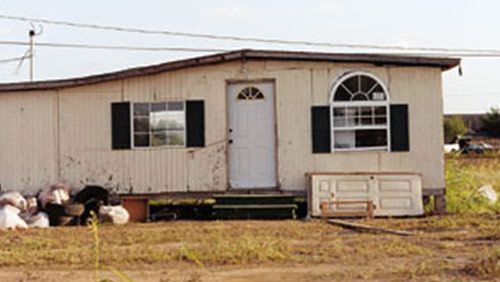
When Marie Delores Lopez wants to bathe one of her four children, or boil water for rice, she can't just turn on her faucet. Instead, the 34-year-old single mother waits until after dark, when no one will see her, then creeps a few doors down to her evangelical church. There she fills up two five-gallon jugs from the church's garden hose and lugs them home. She returns two, maybe three times, to ensure she has enough for the week. "We bathe in our yard, pouring pots of water over our heads," she says. "But not every day. We have to conserve."
Like many of her neighbors in South Alamo, TX, the poorest community in the U.S. (according to Census Bureau figures for populations over 1500), Lopez doesn't have access to running water because she doesn't own the land on which her mobile home is parked. The median income for a family of four is $13,000-$3,000 below the poverty line. Located 10 miles from the Mexican border, its 4000 residents live in an "unincorporated district," meaning they don't qualify for public services such as garbage pickup or street cleaning. Nor are there any housing codes, resulting in some wildly unorthodox construction. An odd assortment of shacks, slapped together with plywood and corrugated tin, line dusty, treeless streets.
Given its proximity to the border, South Alamo is settled almost entirely by immigrants--some legal, others not—all intent on pursuing the proverbial dream. Virgin Mary statues grace the backyards; brand-new American flags drape over chain-link fences. Ten years ago, the area was little more than a patch of scraggly earth just north of the Rio Grande. But as the flow of immigrants increased, landowners began selling off small parcels of their pastures. Exploiting the fresh arrivals' naivete, they reeled in buyers by asking for eminently affordable down payments of $150—then charged interest rates of 300 percent.
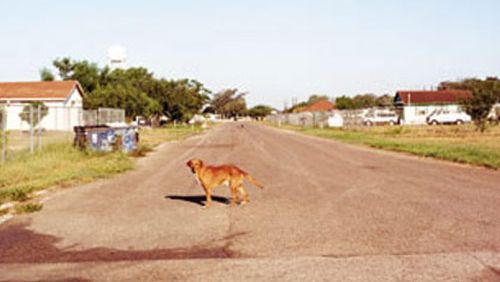
In a few short years, South Alamo was born--though until as recently as six years ago, the roads were still dirt. Without a sewer system or electricity, residents hooked up their lighting fixtures to car batteries and generators.
Most people barely get by. Perla Vasquez, 36, and her four children have been living on $390 a month in government aid since her husband, an undocumented worker, was caught trying to return to the U.S. from Mexico a year ago and sent to jail. Although she occasionally cleans houses for teachers in neighboring towns, Vasquez doesn't own a car, limiting her ability to reach customers. In the months following her husband's arrest, Vasquez fell behind on home payments; it now belongs to the government. Small towns have their advantages, however: Members of Vasquez's church built her a two bedroom replacement house by hand.
Despite its bottom-rung status, South Alamo has a hopeful energy. People who cross the border, after all, do so to make their lives better, and many succeed. "The people here have a vision for their lives," says Juanita Valdez-Cox, the director of La Union del Pueblo Entero, a local advocacy organization. "They worry they won't make it, yet they persist in the face of tremendous hardship." Glimpses of a brighter future can be found in the new businesses opening (McDonald's and Little Caesar's pizza), as well as in aerobics classes for women held at the Dolores Huerta Community Center.
Entrepreneurship reigns. Hand-painted signs clutter the street corners: "We do small-engine repair," they read. "We sell sweets." Leti Sanchez, 37, and her husband worked for a furniture maker when they came to the U.S. in 1998. After three years, they decided to open their own store. "We didn't want to be someone's employees forever," she says. The first year, they barely survived. "We worked seven days a week, 12 hours a day."
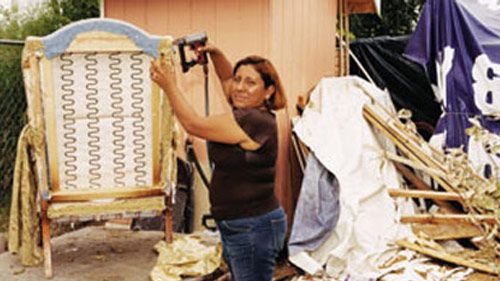
Gradually they built up a clientele, and they now earn about $16,000 a year making couches in the narrow, concrete-floored workshop beside their house. "We still work every day of the week, but we're finally seeing the payoff," says Sanchez.
Two years ago, they bought one of the nicest houses on the block, a three bedroom prefab home. Sanchez decorated rooms with gilt mirrors and landscape prints and planted an avocado tree in the front yard.
Like many immigrants, she wants nothing more than to give her children the same opportunities as wealthier Americans, even if it takes negotiating.
When her eldest children—Sarayma, 15, and Eric, 13—expressed an interest in karate, she arranged to have them cut the grass outside the instructor's martial-arts studio once a week in exchange for discounted lessons.
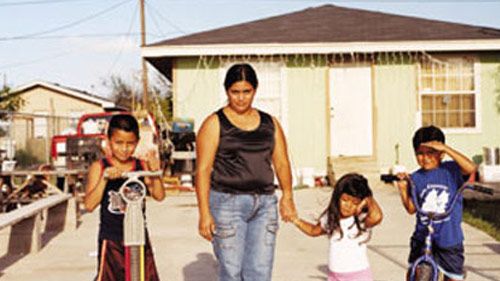
But for all the striving, South Alamo has deep problems. Only 17 percent of residents have graduated high school, and jobs are hard to come by. At night, gunshots echo through the neighborhood and battered cars cruise the streets. Last year, there were 1164 thefts in the area, making it one of the more crime-ridden regions in Texas. Local drug dealers infiltrate family blocks--next to one woman's home, a pink concrete house reputedly served as a squatters' den for years. Neighbors believe the dealers raped three girls there. But no one dared rat them out for fear of the repercussions.
In 2005, Lupe Treviño rolled into town as the county's new sheriff. Treviño was determined to clean up the neighborhood. He set up a mobile police unit where residents could drop by to have a cup of coffee with deputies and share whatever was on their mind—baseball, the birth of a new baby, the state of crime in their neighborhood. "We told the folks in South Alamo, 'You have to be our eyes,'" Treviño says. "Once we established trust in the community, residents began sharing information about drug dealers with us, and we made several arrests."
Even as the area grows safer, many women are already dreaming of moving out and up. Still, some feel wistful about the idea of leaving. "We help one another here," says Sanchez. "We treat each other like part of the family. How could a bigger house at a fancier address replace that?"